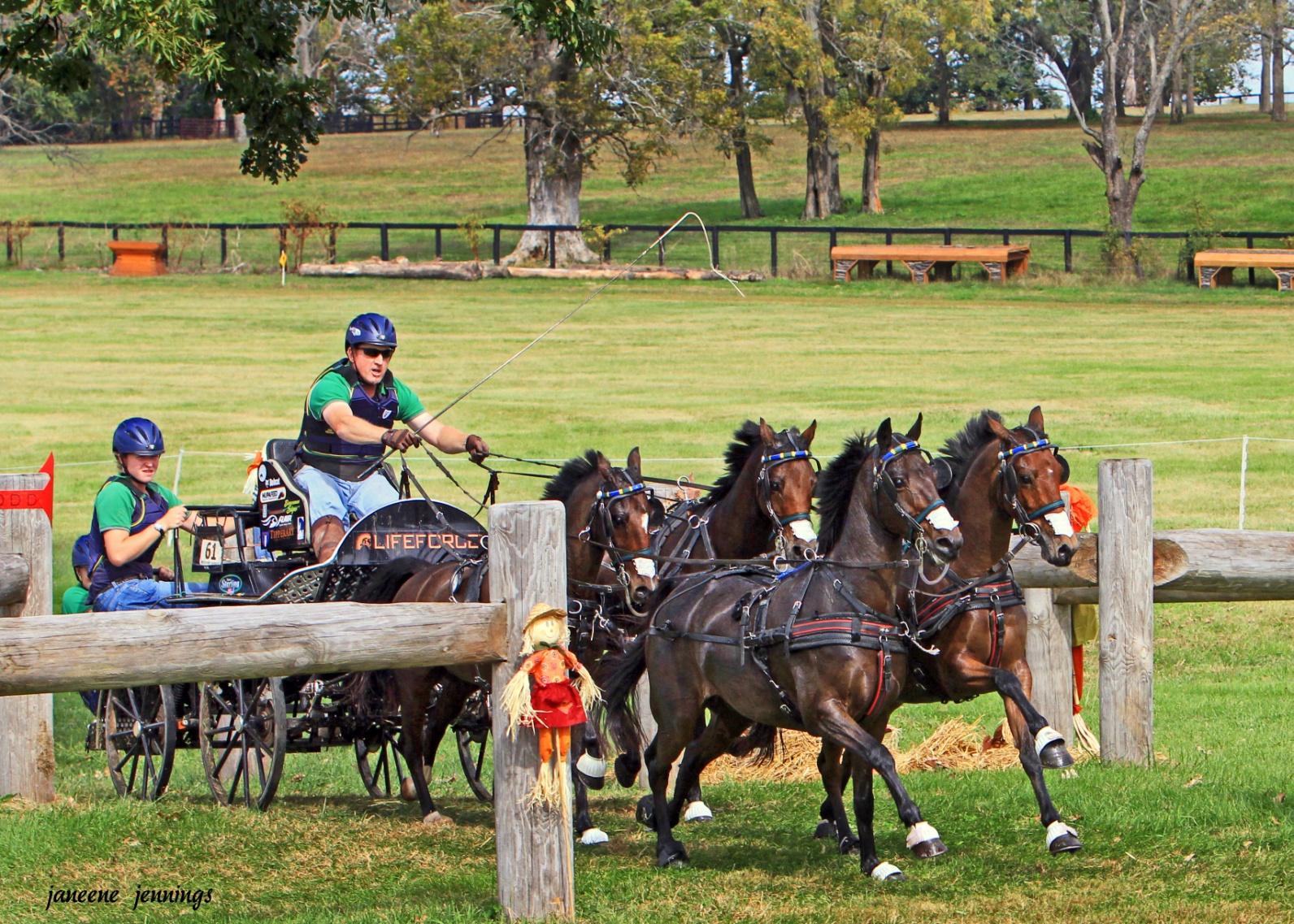Selecting a Sport Horse Prospect-Way of Going
by Suzon Murray
You’ve probably seen dressage horses go. You’ve probably seen hunters jump. But those are made horses, how do you judge whether the babies you have bred to be show horses might be able to compete in that different world? As with points of conformation, there are certain points you will be looking for as your young horses move freely in the field or turn out.
First let’s look at what will be expected of a finished dressage horse, the discipline most people think of when they think “sport horse.” What will that horse be required to do? He will be asked to transfer his weight from his forehand to his hindquarters. To receive that weight, he will learn to curl his loin and bend the joints of his hindquarters. He will be asked to maintain this balance in extension and lateral movement. He will be expected to have freedom in his shoulders to give expression to his movement.
A made dressage horse will be asked to arch his neck in a “telescoping” manner out of his withers. The poll will be the highest point of his neck, with his throat soft. As he rises in front, he will transfer his weight to his hindquarters. His legs should move in a parallelogram; in other words, if he is correct, his hind leg will swing as a mirror image of the front leg. The bridge between front and back will be the strength of his loin. If the horse is correctly collected, his loin will have a round appearance. His croup will be lowered as he “folds” the joints of the hind legs. The pelvis will rotate downward, the stifle will be moved forward, as will be the hocks in order to receive the added load. In this balance, the horse’s forehand will be free for the dancing movements asked of him, the powers in his quarters will give him the impulsion which will make the expression of those movements brilliant.
There seems to be a common misconception among saddleseat breeders and trainers that if a horse displays knee action he is not suitable as a dressage horse. In truth, this really depends on the rest of the action in the swing of the trot. If the horse moves his legs entirely up and down like a piston with little forward swing, of course this is not what a sport horse person would want. The same with a horse who throws his leg out after lifting his knee but fails to swing the shoulder forward (so he is only throwing the leg from the elbow). However, a horse who lifts his knee in the process of swinging the entire shoulder forward will probably display some lovely expression and freedom in his dressage gaits.
But the question remains, how to you see potential for these things in a baby? What qualities should be considered important? Well, it’s all there in the made horse. You won’t see the polish, but a young sport horse prospect will show you flashes of the same qualities I have just described in the finished horse. You should see three nice open, rhythmic gaits. The young horse should show a natural tendency to swing the hind legs forward under the body. The walk should go somewhere in four even beats. It should not be short, rushed or pacey. The trot should be reaching and steady. The canter should be open and balanced. All three gaits should show a tendency toward the qualities described for the finished horse. Now, as an example, let’s go back to our pinto weanling seen at the opening of this article.
In dissecting the canter of a young horse, one should look for a general sense of balance and roundness. A good sport horse prospect will offer the flying change in both directions naturally. Of course, before training, many of the changes won’t be exact, but the instinct to remained correctly balanced by changing leads should be there. A large open step behind is essential. If a horse seems to run with his hind legs “tied together” he will be harder to teach to step under and support himself in the canter. If the horse seems to canter “like a wheelbarrow” with all the weight on his front end, there will be problems balancing him later on.
This brings up an important point of looking at growing horses. They do go through awkward stages. Example, a two year old who was trotting entirely over his forehand. During this time, his back was threatening to rival a stretch limo. If a buyer had looked at him at that age, he would not have take a second look. Three months later, his back is once again in proportion to his body and his trot is showing more promise. When you see a horse at a year or two old, you may have to decide if what you are seeing is the result of growth or if it is a glimpse of the finished product. Looking at the parents may be a help at hedging your bets, but not always.
So watch your babies in the field. When they trot, is there a springy suspension in their stride? Do they hesitate in the air when they’re excited? Can you describe them as buoyant? Does that baby sit back to stop or turn? Does he swap leads with ease? Does their conformation indicate that they might be suitable for an “alternative” profession? There’s no guarantees that any young horse will fulfill the promises he makes in the field, but by examining your babies in a different light, you may see that there are more doors open for them than you first thought. And the next time one of those sport horse people rings you up, you may be able to say, “Yes! I have just the horse for you!”

